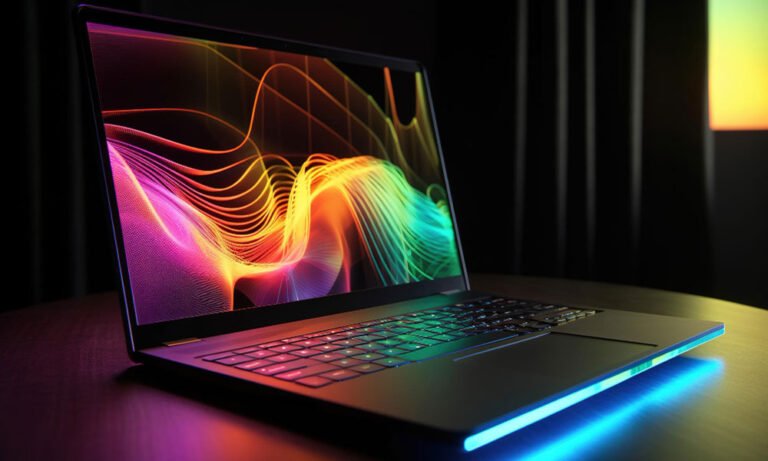Windows 11 is the latest operating system from Microsoft, offering a fresh and modern user interface along with new features and improvements. If you’re looking to upgrade to Windows 11 or perform a clean installation, this step-by-step guide will walk you through the installation process.
Table of Contents
- Introduction
- System Requirements
- Back Up Your Data
- Check Compatibility with PC Health Check Tool
- Create Windows 11 Installation Media
- Boot from Installation Media
- Install Windows 11
- Set Up Windows 11
- Conclusion
- FAQs
1. Introduction
Windows 11 brings a new level of productivity, gaming enhancements, and a visually appealing interface. Before you begin the installation process, make sure to check your system requirements and back up your important files to ensure a smooth transition.
2. System Requirements
Ensure that your computer meets the minimum system requirements for Windows 11 installation. These requirements include:
- Processor: 1 GHz or faster with 2 or more cores on a compatible 64-bit processor
- RAM: 4 GB or more
- Storage: 64 GB or more of storage
- Graphics Card: DirectX 12 compatible or later with a WDDM 2.0 driver
- Display: A high-definition (720p) display, 9″ or greater diagonally, with 8 bits per color channel
3. Back Up Your Data
Before proceeding with the installation, it’s essential to back up your important files, documents, and media. You can use an external hard drive, cloud storage, or backup software to create a copy of your data. This ensures that your files are safe in case of any unforeseen issues during the installation process.
4. Check Compatibility with PC Health Check Tool
To verify if your PC is compatible with Windows 11, you can use the PC Health Check tool provided by Microsoft. This tool will check your system’s compatibility and provide recommendations for any necessary hardware or software upgrades.
5. Create Windows 11 Installation Media
To install Windows 11, you’ll need a bootable USB drive or DVD containing the Windows 11 installation files. You can create this media by using the official Windows 11 Media Creation Tool provided by Microsoft. Follow the instructions on the tool to create the installation media.
6. Boot from Installation Media
Insert the bootable USB drive or DVD into your computer and restart it. Access the BIOS or boot menu (usually by pressing F12, Esc, or Del during startup) to choose the boot device. Select the USB drive or DVD drive to boot from it and start the Windows 11 installation process.
7. Install Windows 11
Once you’ve booted from the installation media, the Windows 11 installation process will begin. Follow these steps:
- Select your language, time and currency format, and keyboard layout preferences.
- Click “Install Now” to start the installation.
- Enter the product key if prompted or choose the option to activate later.
- Accept the license terms and click “Next.”
- Choose the installation type: “Upgrade” to keep your files and apps or “Custom” for a clean installation.
- Select the disk or partition where you want to install Windows 11.
- Follow the on-screen instructions to complete the installation process.
8. Set Up Windows 11
After the installation is complete, Windows 11 will restart, and you’ll need to follow the initial setup wizard. This includes setting up your region and language preferences, signing in with a Microsoft account, and customizing various settings such as privacy options and desktop theme.
9. Conclusion
Congratulations! You have successfully installed Windows 11 on your computer. Enjoy the new features, improved performance, and enhanced user experience offered by Microsoft’s latest operating system.
10. FAQs
Q: Can I upgrade to Windows 11 from an older version of Windows? A: Yes, you can upgrade to Windows 11 from Windows 10 if your computer meets the system requirements and is eligible for the upgrade.
Q: How long does it take to install Windows 11? A: The installation time can vary depending on your computer’s hardware, but on average, it takes around 20 to 30 minutes for the installation process to complete.
Q: Do I need to reinstall my applications and drivers after upgrading to Windows 11? A: In most cases, your applications and drivers should carry over during the upgrade process. However, it’s always a good idea to check for updates from the respective software manufacturers to ensure compatibility with Windows 11.
Q: Can I roll back to my previous version of Windows if I encounter issues with Windows 11? A: Yes, Windows 11 provides an option to roll back to your previous version of Windows within the first 10 days after installation. This allows you to revert back in case of any compatibility or functionality issues.
Q: Where can I find additional support for Windows 11? A: Microsoft provides extensive documentation, support articles, and community forums to assist with any questions or issues related to Windows 11. Visit the official Microsoft website for more information.

